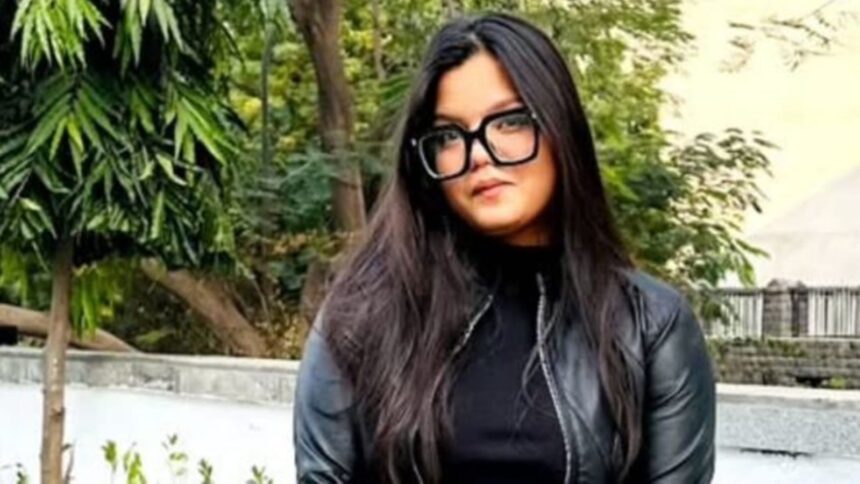Last month, a tragic incident laid bare the mental toll of social media fame. Misha Agrawal, a popular content creator, died by suicide on April 24, days before her 25th birthday. The reason? A steady loss of followers on social media.
While her family initially kept the cause private, her sister Mukta Agrawal later revealed on Instagram that Misha had been battling depression triggered by a decline in her follower count. “My little baby sister had built her world around Instagram and her followers, with a single goal of reaching 1 million followers and gaining loving fans. When her followers started decreasing, she became distraught and felt worthless. Since April, she has been deeply depressed, often hugging me and crying, saying, Jijja, what will I do if my followers decrease? “My career will be over,” wrote Mukta on Misha’s official Instagram account.
Mukta also shared that Misha had set screenshots of her follower counts as her phone wallpaper. “Instagram is not a real world and followers are not real love,” she wrote, urging others to look beyond metrics.
Misha’s story is an extreme but alarming illustration of a growing crisis within the creator economy, one where as young people build their identities and livelihoods around digital validation.
In a conversation with , creators spoke about the emotional strain of maintaining an online identity.
Business creator Nitin Joshi called “emotional calibration” his biggest challenge. “Showing up with the same energy – whether you’re celebrated, ignored, or hated – is the hardest part,” he said.
Fashion and beauty creator Sana Ghauri echoed this sentiment. “Some days, I’m dealing with breakouts, anxiety, or just feeling low but the algorithm doesn’t care, right? You start questioning whether people will still engage if you’re not glowing or creating daily. And let’s not even talk about comparison. It’s easy to feel like you’re not doing enough when your feed is full of curated perfection,” she said.
Sejal Bhalke, an emerging creator said, “I knew there would be hate comments or people judging my appearance, but initially, since my follower count was small, the response was mostly positive.” Things flipped when one of her videos went viral. “Suddenly, there were hate comments, judgements about how I looked, and of course, some support too. Now, I don’t read comments at all. I post and go offline,” she said.
Clinical psychologist Nishita Srivastava from Lissun, a mental health platform, has observed a concerning pattern in clients who work in content creation. “Creators experience a ‘high’ – on getting ‘likes’ or appreciation in some form – that triggers a reward pathway similar to what people experience during substance use.”
The problem, Srivastava noted, is what happens when that initial high fades: “After some time, when the initial high dies, one might aim for more and more to achieve that same pleasure one felt initially. This might lead to to be validated by others. In the long run, this leads to the individual’s self-esteem and current mood being completely dependent on how well their content is doing on the social platforms,” she said.
The unpredictable nature of social media algorithms creates what experts call “algorithm anxiety”—a state of constant hypervigilance that takes a physical toll on creators. “Anything that is uncertain or is out of our control gives us anxiety; and this holds true for content creators as well. One never knows what might be the next viral reel or what might make one become and stay relevant,” said Srivastava.
Psychologist Raashi Gurnani said she has seen a “significant rise in clients who work as content creators or are deeply embedded in the social media space.” Many of them present with symptoms of , burnout, and identity confusion. “A common psychological pattern is emotional dysregulation triggered by inconsistent online feedback—what they often describe as ‘the algorithm’s mood swings.’ These individuals live in a constant state of performance, where their self-concept becomes heavily enmeshed with audience reception,” she said.
The pressure on creators isn’t just internal; it often comes from brands and clients obsessed with metrics. Mohit Ghate, co-founder at Wit & Chai Group, acknowledged this reality: “Absolutely, the client expectations around numbers like follower count, reach, and engagement often reduce creators to mere distribution channels, when in reality, they are storytellers and culture shapers.”
While Ghate recognised the business necessity of tracking metrics – “especially for justifying ROI, as agencies have to justify effort vs benefit ratio” – he argued that “the obsession with vanity numbers can be deeply flawed.”
Sheetal Sharma, founder and director of Supreme Support Consultants, a PR and influencer marketing agency, sees similar pressures. She said, “The fixation on high performance, number of followers, and virality places huge pressure on creators to keep going nonstop. It makes them feel they can’t spare an ‘off’ week.”
Many industry insiders worry that the glamourised portrayal of influencer life misleads young people about the emotional costs of the profession.
“Influencer life is usually idealised – everything from travel to gifts, popularity, and adventure. But it’s not seen the behind the scenes of endless takes for one perfect video, content strategy, worry, or loneliness. And for young creatives entering into this space with no boundaries and support systems, this can be perilous,” said Sharma.
Piyush Agrawal, co-founder of CREATE, an influencer marketing and talent management agency, agreed: “The truth is, it requires a thick skin and a strong work ethic to sustain in this field. While the rewards are high, the effort and pressure to consistently deliver are just as intense.”
Despite increasing awareness about mental health, many creators feel they can’t openly discuss their struggles online.
“There’s always pressure to appear ‘fine.’ Because in the creator economy, vulnerability has a shelf life — and performance has a premium,” explained Joshi. “You’re rewarded more for a motivational quote than for admitting weakness. Authenticity is encouraged — but only if it’s viral, polished, and packaged with trending audio.”
Ghauri shared a similar sentiment: “As a creator, there’s this unspoken pressure to always seem okay – put together, thriving, glowing. But the truth is, I have my low days too. Talking about mental health publicly still feels vulnerable, like people might judge or think I’m being ‘too much’.”
Bhalke has developed her own methods for managing the emotional impact of social media. “You’ll laugh at this, but whenever I post a video, I literally switch off my internet and disappear until the next morning. It’s like I’ve trained my mind to believe that if I don’t watch the views, the video might actually perform better.”
Srivastava recommended specific strategies for content creators to protect their mental well-being. “Building movement: One might want to that keep them physically active and in touch with their authentic self. This could include activities like sports, gardening or pottery. Taking time off social media: Going for a digital detox or having days where you try to limit social media usage might be a great idea, especially for individuals who spend a lot of time online,” she said.
Some agencies are beginning to recognise the need for better mental health support for creators. Ghate shared how his agency approaches burnout: “What helps, even if it doesn’t eliminate the pressure, is allowing creators the space to approach content in their voice and style. It acts like a safety valve, a small release in an otherwise high-pressure system. While it doesn’t erase burnout, it certainly humanises the process.”
Agrawal stressed financial discipline as a path to greater autonomy. “When you’re financially stable, you have the freedom to choose work that truly aligns with you and say no to what doesn’t. That autonomy helps reduce the pressure,” he said.
Sharma believes the industry culture is slowly shifting. “Increasingly more brands are now recognising the power of authenticity and lasting impact compared to continuous outputs. As a studio, we’re proponents for the well-being of creators and actively promote direct discussion with brands on realistic requirements and sustainable release timelines,” she said.








